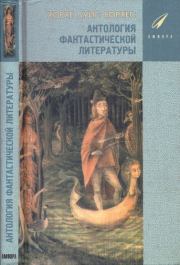Александр Владимирович Вовин - On the Etymology of the Name of Mt. Fuji
 | Название: | On the Etymology of the Name of Mt. Fuji |
Автор: | Александр Владимирович Вовин | |
Жанр: | Языкознание | |
Изадано в серии: | the languages of asia series #16 | |
Издательство: | Brill | |
Год издания: | 2018 | |
ISBN: | 978-90-04-35085-4 | |
Отзывы: | Комментировать | |
Рейтинг: | ||
Поделись книгой с друзьями! Помощь сайту: донат на оплату сервера | ||
Краткое содержание книги "On the Etymology of the Name of Mt. Fuji"
Аннотация к этой книге отсутствует.
Читаем онлайн "On the Etymology of the Name of Mt. Fuji". [Страница - 3]
NML Nominalizer
PT Particle
SUB Subordinative
TOP Topic
Languages
EOJ Eastern Old JapaneseMdJ Modern Japanese
MJ Middle Japanese
OJ Old Japanese
pA proto-Ainu
pJ proto-Japonic
pJN proto-Japanese
WOJ Western Old Japanese
Primary Sources
GK Gengo kokka (言語國訛), mid Edo (1601–1868 AD) periodCMJF Chikamatsu Jōruri fubon (近松浄塯璃譜本), late 17th c.
HF Hitati Fudoki (常陸風土記), 713 AD
HKMB Heike mabushi (平家正節), 1776 AD
KKWKS Kokin waka shū (古今和歌集), 921 AD
MYS Man’yōshū (萬葉集), between 759 and 771 AD
NSK Nihonshoki (日本書紀), 720 AD
SCS Shūchūshō (袖中抄), 1185–1190 AD
SFIB Suruga Fudoki Ibun (駿河風土記異聞), 12th c.?
SIWKS Jōben-bon (浄弁本) of Shūi waka shū (拾遺和歌集), 1185–1333 AD
TM Taketori monogatari (竹取物語), late ninth or early tenth century AD
WTS Waji taikan shō (和字大観抄), first part of 18th c.
Secondary Sources
Akimoto, Kichirō (ed.) 1958. Fudoki [Gazetteers]. Nihon Koten Bungaku Taikei [Series of the Japanese Classical Literature], vol. 2. Tokyo: Iwanami Shoten.Akinaga, Kazue; Ueno, Kazuaki; Sakamoto, Kiyoe; Satō, Eisaku; Suzuki, Yutaka 1997. Nihongo akusento shi sōgō shiryō. Sakuin hen [The comprehensive materials on the history of accentual history of the Japanese language. An index]. Tokyo: Tōkyōdō.
Aoki, Kazuo; Inaoka, Kōji; Sasayama, Haruo; Shirafuji, Noriyuki (eds.) 1998. Shoku Nihongi [Continued Annals of Japan]. Shin Nihon koten bungaku taikei [New Series of the Japanese Classical Literature], vol. 12–16. Tokyo: Iwanami.
Batchelor, John 1928. ‘Helps to the Study of Ancient Place-Names in Japan’. Transactions of the Asiatic Society of Japan, 1928, pp. 52–102. Reprinted in: Refsing, Kirsten (ed.). Early European Writings on the Ainu Language, vol. 9. London: Routledge Curzon, 1996.
Batchelor, John 1938. An Ainu-English-Japanese Dictionary. 4th edition. Tokyo: Iwanami.
Kuroita, Katsumi & Matsuyama, Jirō (ed.) 1965–1966. Nihonshoki [Annals of Japan]. Shintei zōho kokushi taikei [The newly corrected and enlarged series on Japanese history], vols. 1a and 1b. Tokyo: Yoshikawa kōbunkan.
Pellard, Thomas 2011. ‘Ryukyuan perspectives on the Proto-Japonic vowel system.’ Proceedings of the 20th Japanese/Korean Linguistics Conference. Stanford: SSLI, pp. 1–15.
Sakakura, Atsuyoshi (ed.) 1957. Taketori monogatari. In: Nihon koten bungaku taikei [Series of the Japanese Classical Literature], vol. 9, pp. 3–78. Tokyo: Iwanami shoten.
Vovin, Alexander 1993. A Reconstruction of Proto-Ainu. Leiden & New York: Brill.
Vovin, Alexander 2011. ‘On one more source of Old Japanese i₂.’ Journal of East Asian Linguistics 20, pp. 219–228.
Vovin, Alexander 2013. Man’yōshū. Book 20. A New English Translation Containing the Original Text, Kana Transliteration, Romanization, Glossing, and Commentary. Folkestone/Leiden: Global Oriental/Brill.
Notes
1
The Shoku Nihongi text is cited according to Aoki Kazuo, Inaoka Kōji, Sasayama Haruo, and Shirafuji Noriyuki’s edition (1991–1998).(обратно)
2
The Taketori monogatari text is cited according to Sakakura Atsuyoshi’s edition (1957: 3–78).(обратно)
3
In addition, pA *unti ‘fire’ is a regional word; it is attested only in Sakhalin dialects and in the Soya dialect in the extreme north of Hokkaido.(обратно)
4
The Fudoki texts are cited according to Akimoto Kichirō’s edition (1958).(обратно)
5
The Nihonshoki text is cited according to Kuroita Katsumi and Matsuyama Jirō’s edition (1965–1966).(обратно)
6
All the data in the right three columns in this table are from Akinaga, Kazue; Ueno, Kazuaki; Sakamoto, Kiyoe; Satō, Eisaku; Suzuki, Yutaka (1997: 432).(обратно)
7
Technically EOJ pu ‘fire’ is a word from Muⁿzasi province, but it is from the Tatiᵐbana district located in the west of this province, which is barely 50 km. from Mt. Fuji.(обратно)
8
The reconstruction of the original text, transcription, glossing and translation are from Vovin (2013: 188), with one minor adjustment in the transcription and additional highlighting made on purpose for this contribution.(обратно)
9
Many thanks to John Whitman, with whom I have had a long discussion about the reconstruction of pJ word for ‘fire’ about five years ago. Many of his careful arguments against *poy vs. *pəy made me revise and rethink the present argumentation about the name of Mt. Fuji as being evidence for pJ *poy rather than *pəy.(обратно)
10
The MJ accent of OJ tônzi ‘mistress of the house’ is unknown. (обратно)--">


